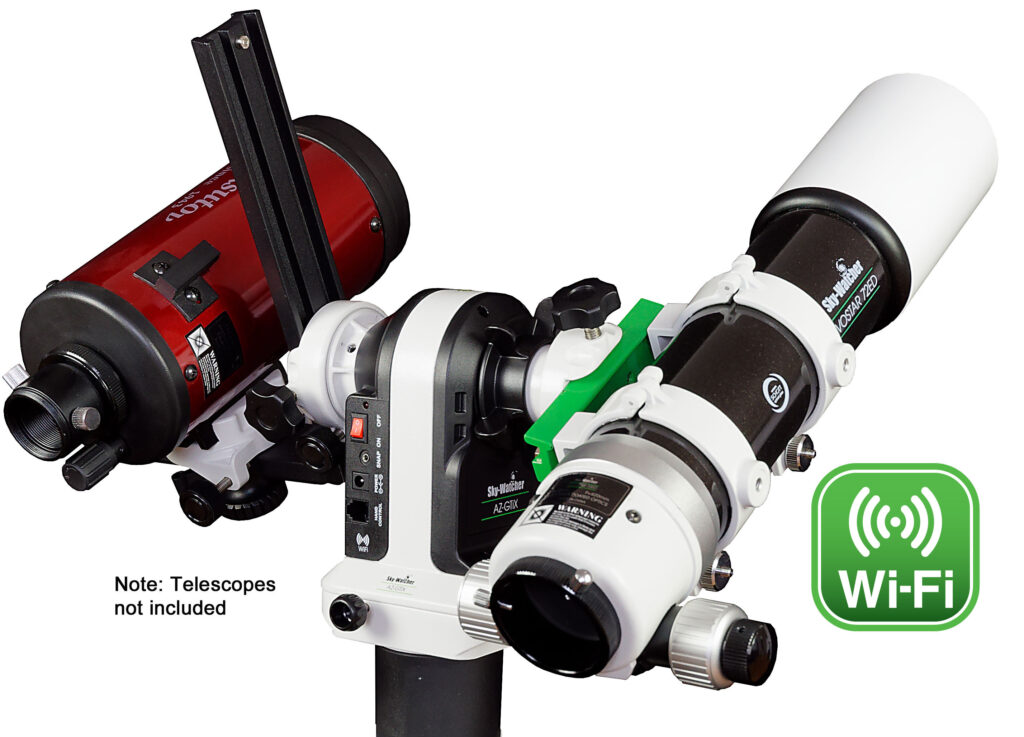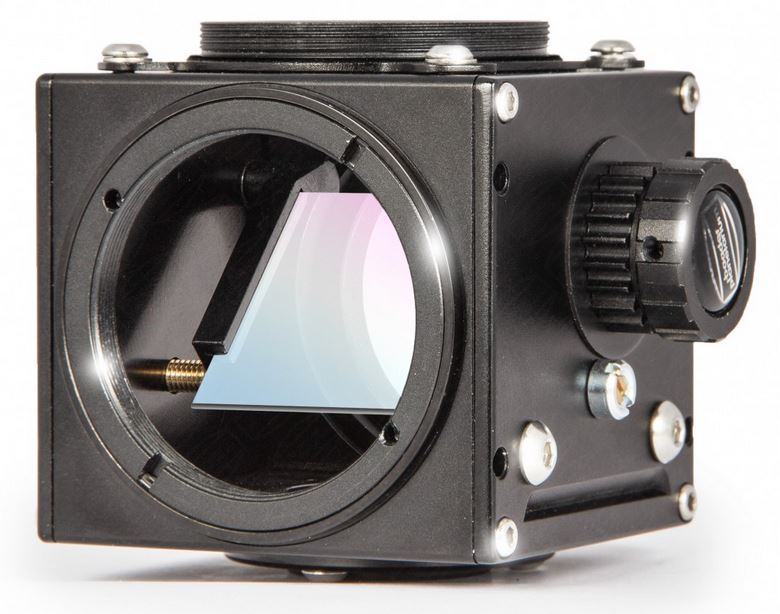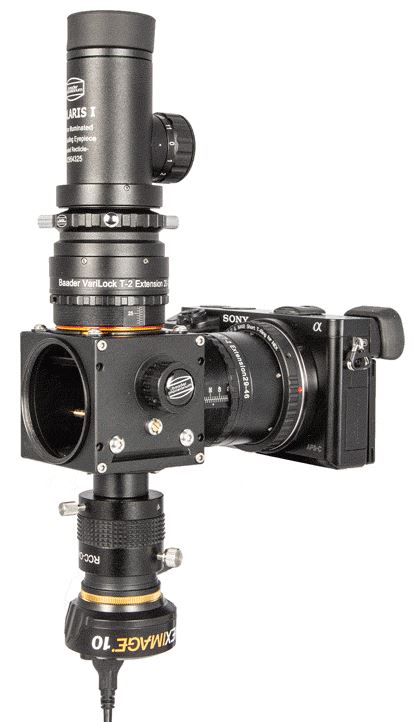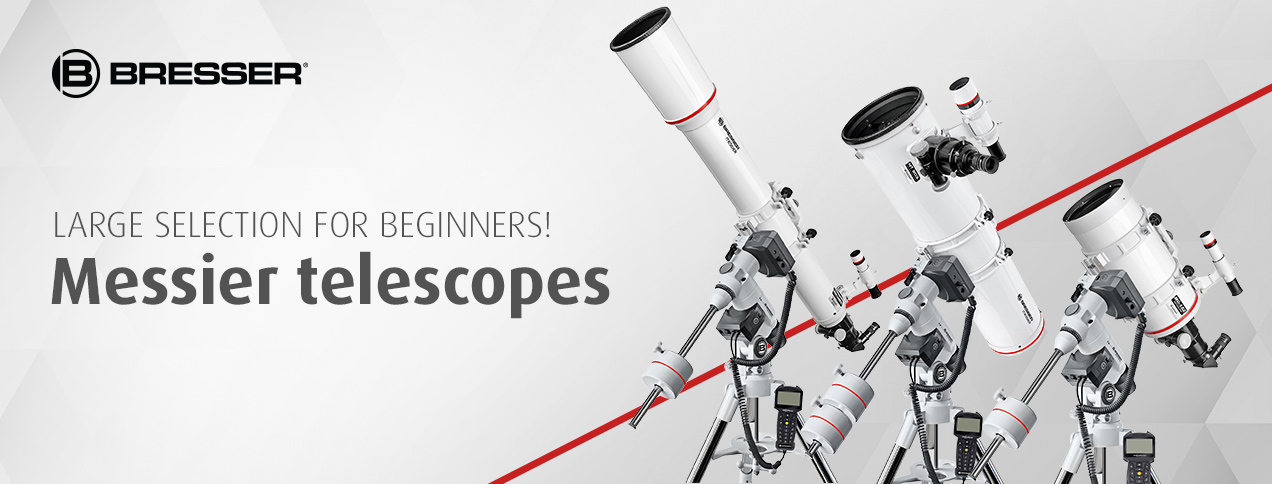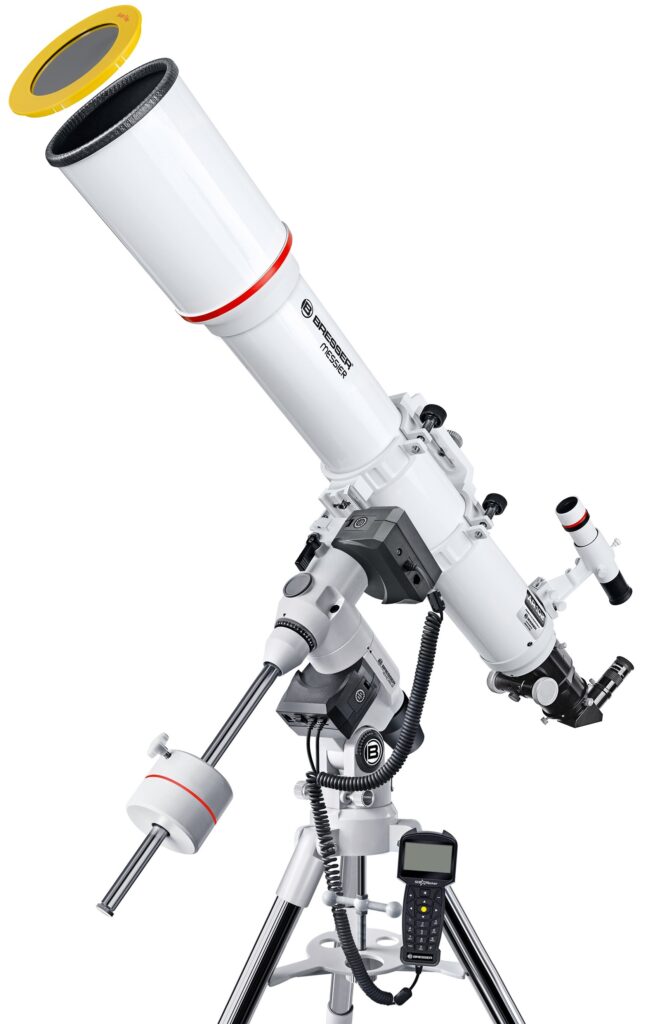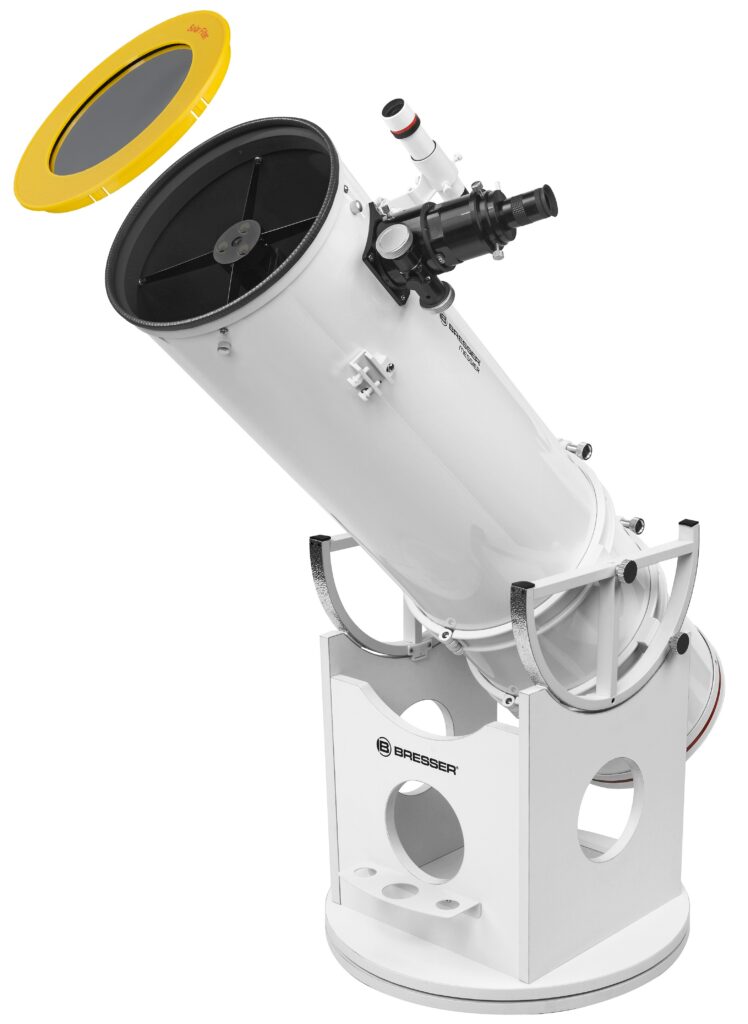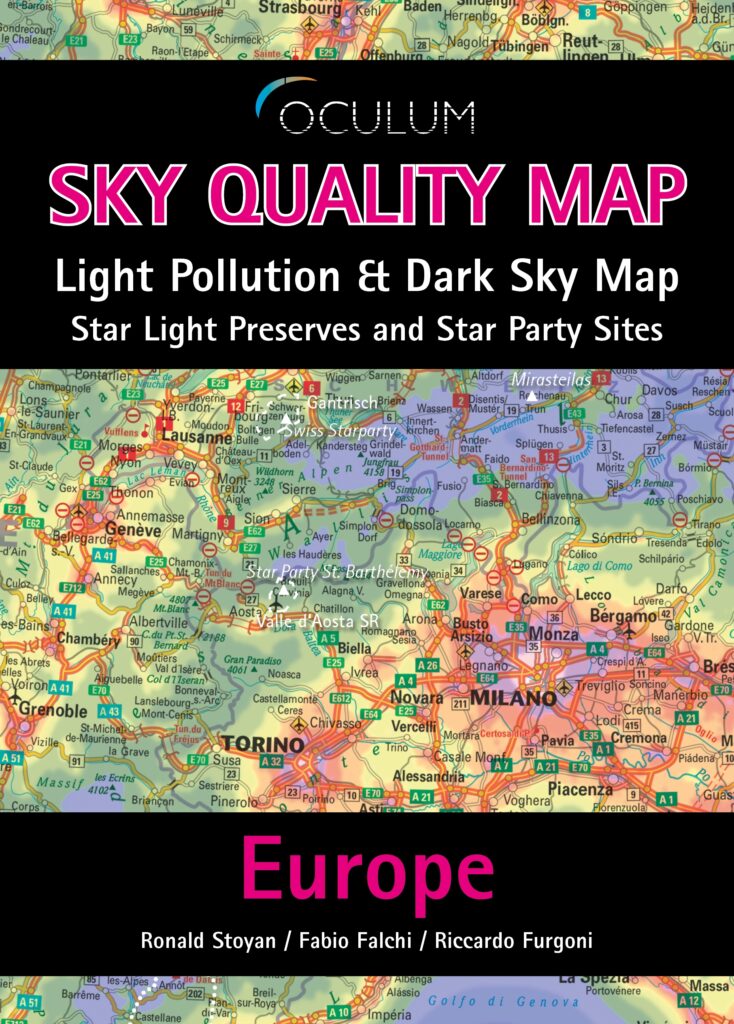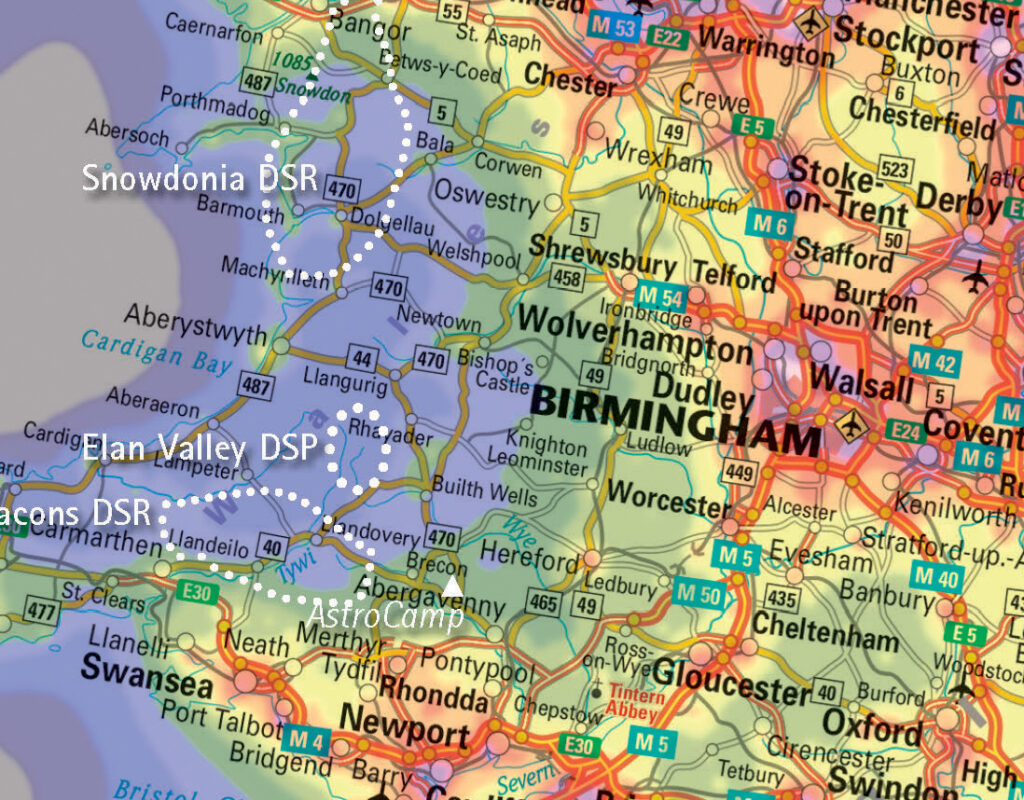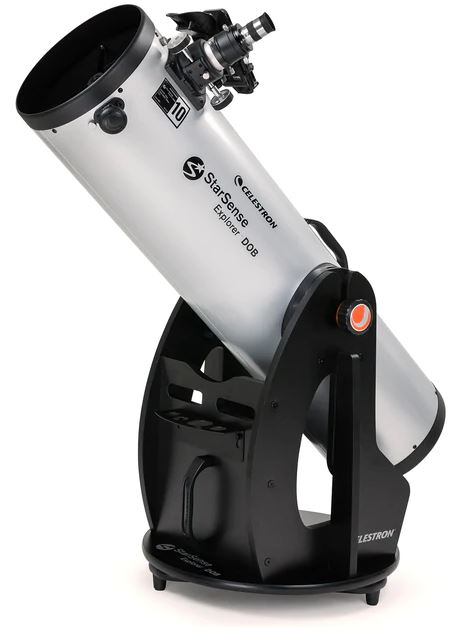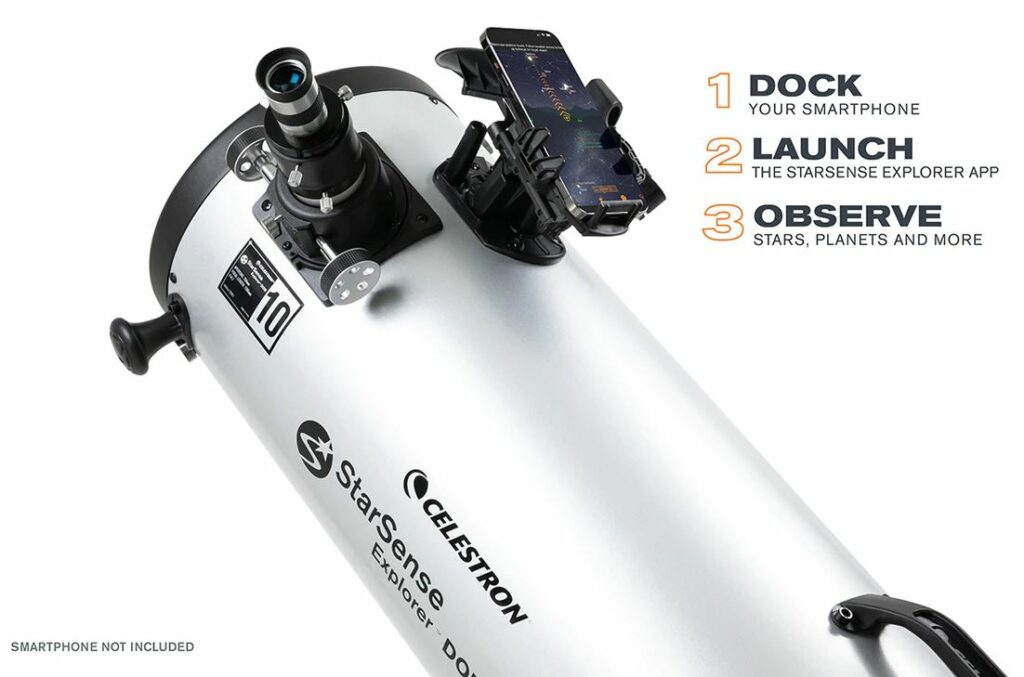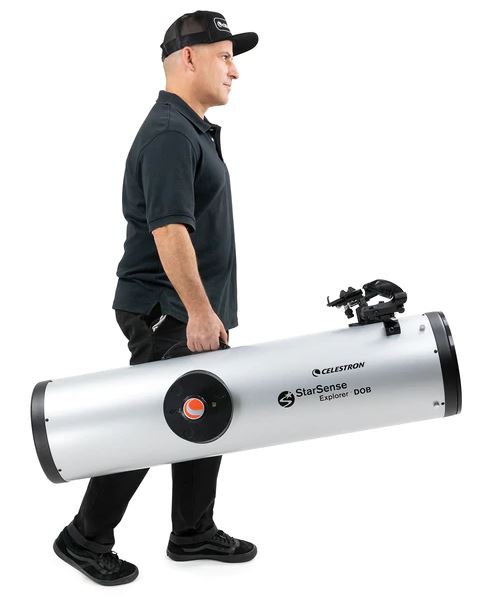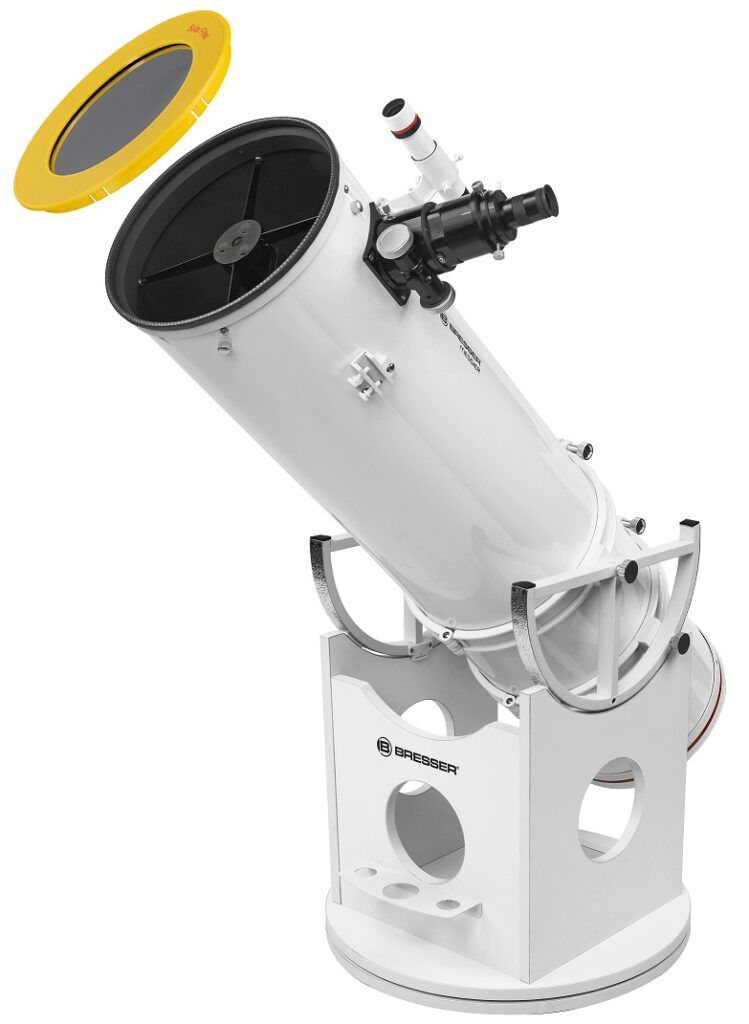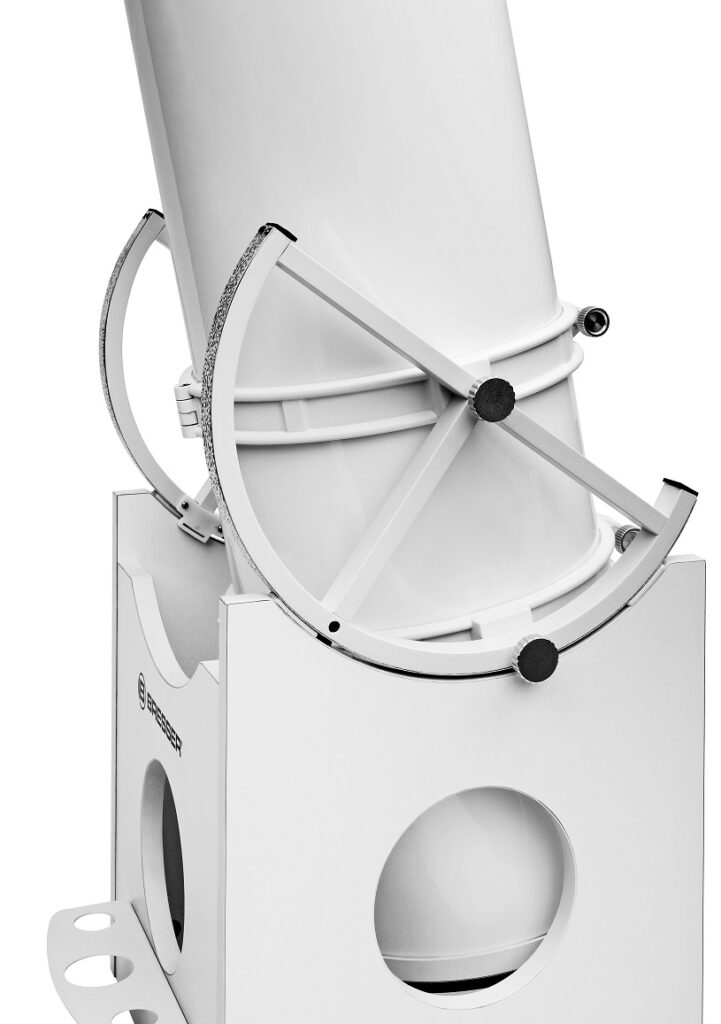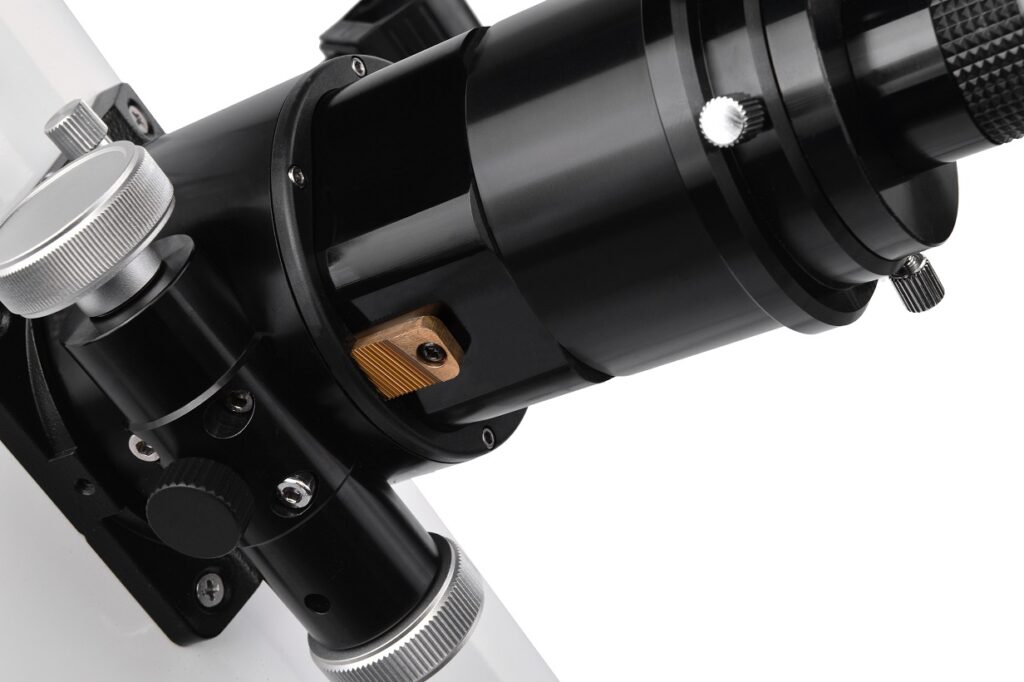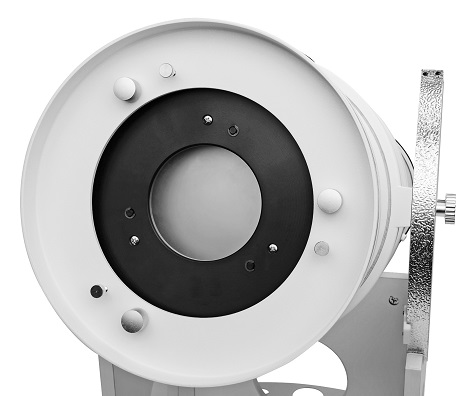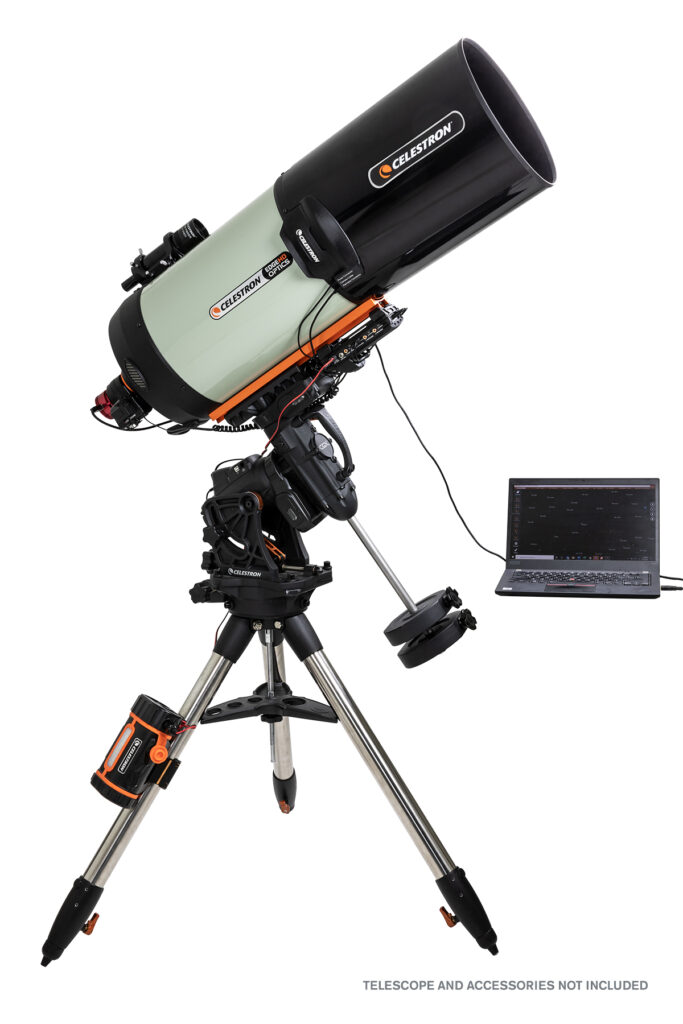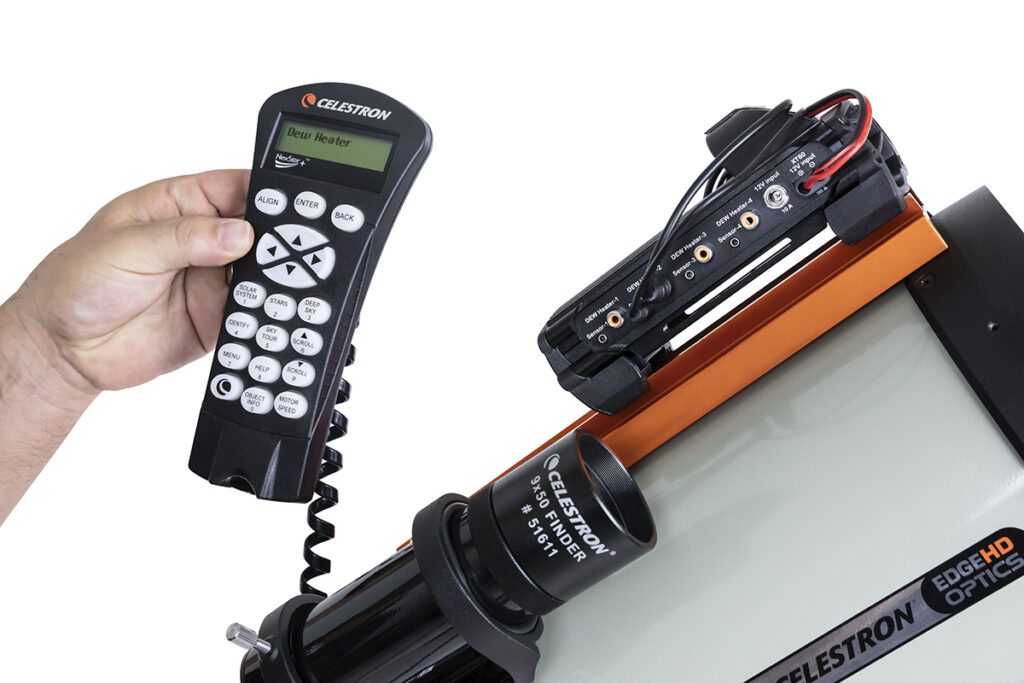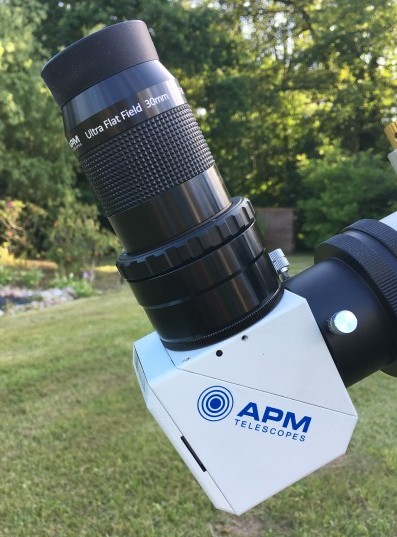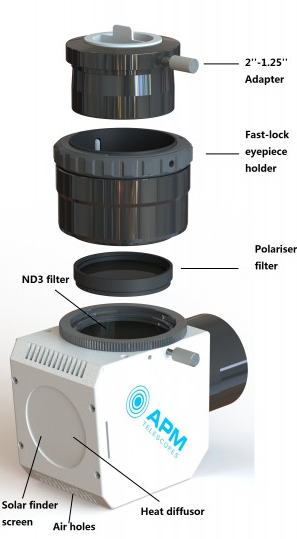The most impressive way to observe the Sun is in H-alpha light. This is red light with a wavelength of 656 nanometres. With a normal solar filter, you will only be able to observe sunspots, whereas with H-alpha telescopes, prominences at the Sun’s edge become visible. Filaments, solar flares and much more can be seen on the solar surface. It is only in H-alpha light that are you able to appreciate the Sun’s dynamics.
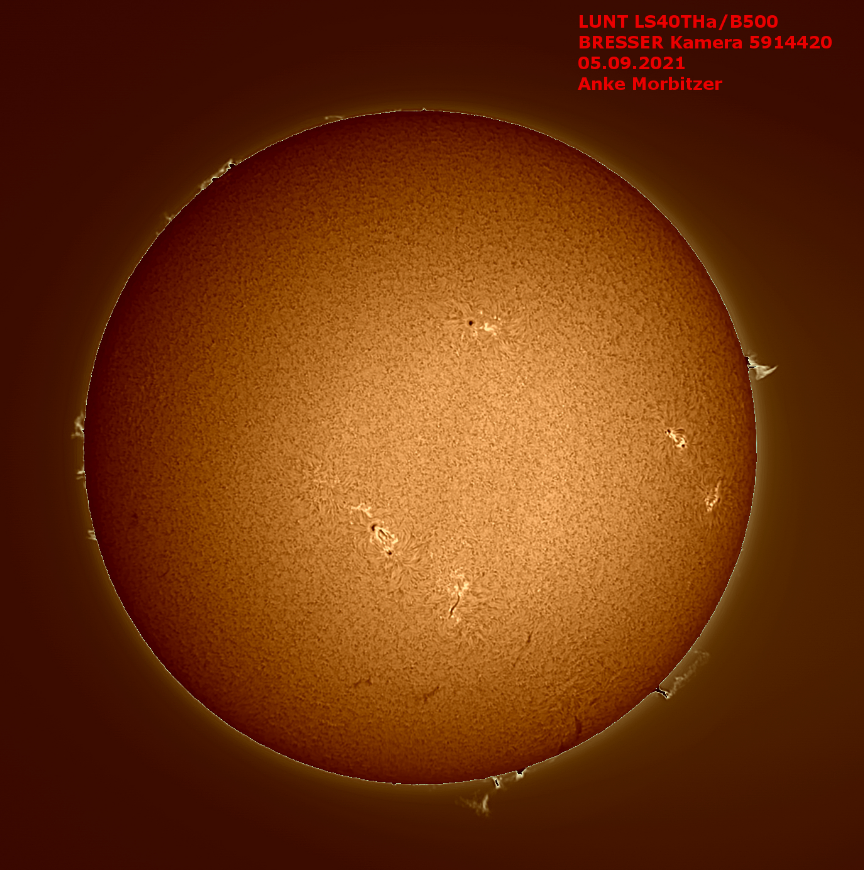
The Sun in H-alpha light, photographed with the LS40T Ha solar telescope
Unfortunately, H-alpha filter systems often cost several thousand euro. However, the new LS40T Ha telescopes from Lunt Solar Systems make observing the Sun’s red chromosphere much more affordable: solar observation is accessible to everyone!
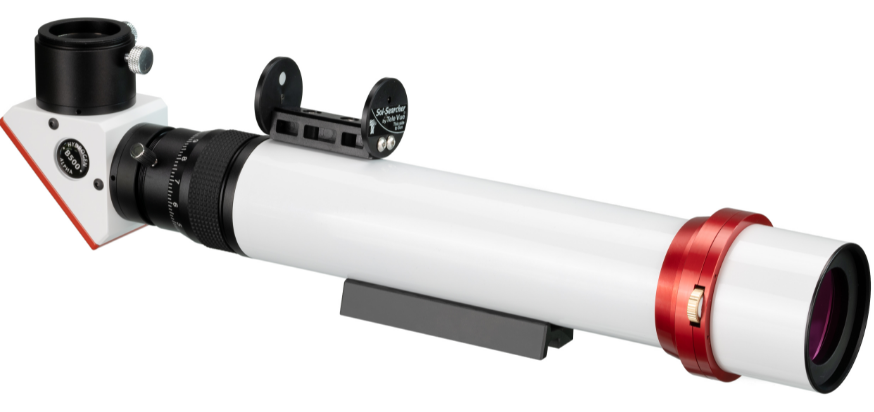
Lunt Solar Systems ST 40/400 LS40T Ha B600 solar telescope
LS40T Ha telescopes are available in three versions:
The difference between the versions lies in the size of the blocking filter. This filter element is located in the rear erecting lens, which looks like a star diagonal.
All blocking filters are suitable for visually observing the Sun. However, a larger filter is more suitable for photography, as it allows the exposure of a larger camera sensor. The B600 blocking filter is a very good compromise if you want to observe visually as well as photograph with an planetary camera.
The telescopes are supplied with a helical focuser, a Vixen standard prism rail, and a threaded connection for camera tripods. The practical solar finder helps to align the telescope.
An optional carrying case is also available, which makes use of the foam inserts in the original packaging. When you get your telescope, don’t throw away these inserts, instead use them to line the case. In this way, you replace the cardboard outer packaging with a beautiful and stable aluminium case.
Another important recommendation is the very practical sun hat from Lunt Solar Systems – not just for solar observing.
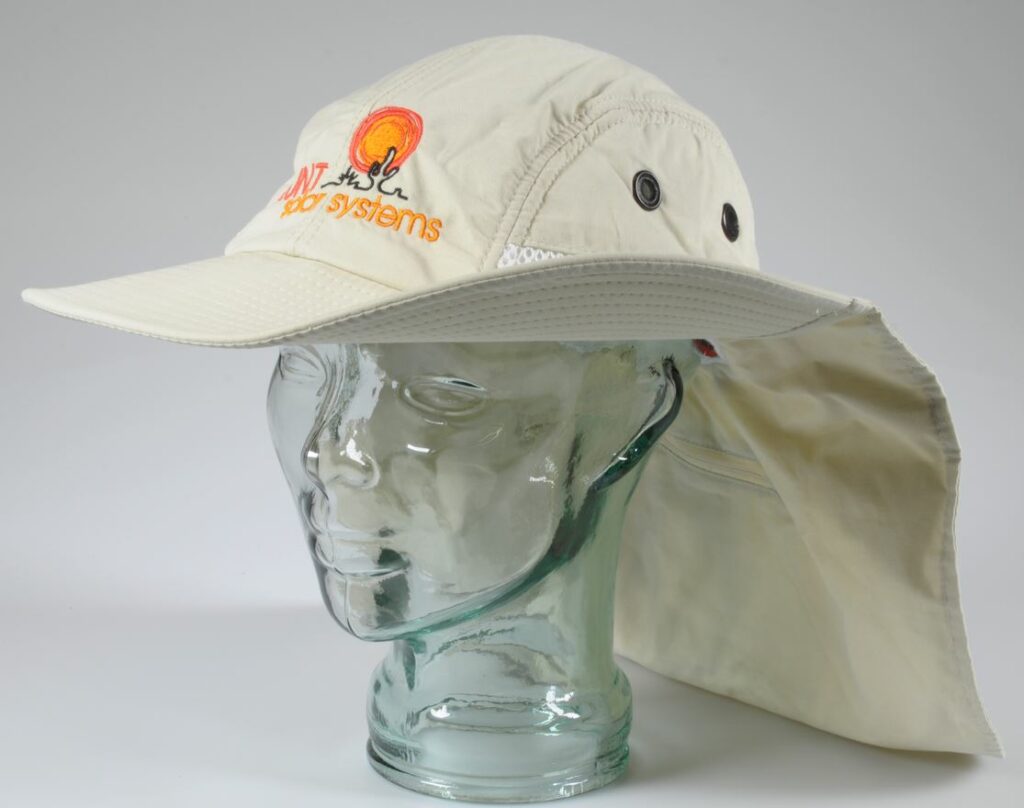
Cool head for solar observers

